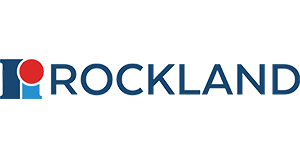ATG13 protein-GST fusion
ATG13 protein-GST fusion
SKU
ROC009-001-R44S
Packaging Unit
20 µg
Manufacturer
Rockland
Availability:
loading...
Price is loading...
Application Note: ATG13 Protein is stored in 50mM Tris-HCl, pH 7.5, 50mM NaCl, 10mM glutathione, 0.1mM EDTA, 0.25mM DTT, 0.1mM PMSF, 25% glycerol. ATG13 Protein is suitable for use in Western Blot. Expect a band approximately ~ 96kDa on specific lysates or tissues. Specific conditions for reactivity should be optimized by the end user.
Concentration Value: 0.1 µg/µL
Western Blot Dilution: User Optimized
General Disclaimer Note: This product is for research use only and is not intended for therapeutic or diagnostic applications. Please contact a technical service representative for more information. All products of animal origin manufactured by Rockland Immunochemicals are derived from starting materials of North American origin. Collection was performed in United States Department of Agriculture (USDA) inspected facilities and all materials have been inspected and certified to be free of disease and suitable for exportation. All properties listed are typical characteristics and are not specifications. All suggestions and data are offered in good faith but without guarantee as conditions and methods of use of our products are beyond our control. All claims must be made within 30 days following the date of delivery. The prospective user must determine the suitability of our materials before adopting them on a commercial scale. Suggested uses of our products are not recommendations to use our products in violation of any patent or as a license under any patent of Rockland Immunochemicals, Inc. If you require a commercial license to use this material and do not have one, then return this material, unopened to: Rockland Inc., P.O. BOX 5199, Limerick, Pennsylvania, USA.
Physical State: Liquid (sterile filtered)
Purity and Specificity: Recombinant full-length human ATG13 was expressed by baculovirus in E.coli using an N-Terminal Glutathione-S-Transferase fusion protein. The purity was determined to be >70% by densitometry.
Background: ATG13 is a protein that is part of the autophagy complex which is the major route by which cytoplasmic contents are delivered to the lysosome for degradation. ATG13 localizes on the autophagic isolation membrane and is essential for autophagosome formation. In mammals, ATG13 interacts with ATG1 (ULK1/2) and FIP200 to form the autophagy. ATG101 can also bind to ATG13 protein and is important for the stability and basal phosphorylation of ATG13 and ULK1 (1). mTOR can suppress the autophagy process through direct regulation of the ULK1-Atg13-FIP200 complex where mTOR has been shown to phosphorylate ATG13 (2). ATG13 Protein is ideal for investigators involved in Signaling Proteins, Apoptosis Proteins, Angiogenesis, Angiogenesis, Apoptosis/Autophagy, Apoptosis/Autophagy, Cardiovascular Disease, Cardiovascular Disease, Cellular Stress, Cellular Stress, Inflammation, Inflammation, Metabolic Disorder, Metabolic Disorder, Neurobiology, Neurobiology, NfkB Pathway, NfkB Pathway, p38 Pathway, and p38 Pathway research.
Low Endotoxin: No
Concentration Value: 0.1 µg/µL
Western Blot Dilution: User Optimized
General Disclaimer Note: This product is for research use only and is not intended for therapeutic or diagnostic applications. Please contact a technical service representative for more information. All products of animal origin manufactured by Rockland Immunochemicals are derived from starting materials of North American origin. Collection was performed in United States Department of Agriculture (USDA) inspected facilities and all materials have been inspected and certified to be free of disease and suitable for exportation. All properties listed are typical characteristics and are not specifications. All suggestions and data are offered in good faith but without guarantee as conditions and methods of use of our products are beyond our control. All claims must be made within 30 days following the date of delivery. The prospective user must determine the suitability of our materials before adopting them on a commercial scale. Suggested uses of our products are not recommendations to use our products in violation of any patent or as a license under any patent of Rockland Immunochemicals, Inc. If you require a commercial license to use this material and do not have one, then return this material, unopened to: Rockland Inc., P.O. BOX 5199, Limerick, Pennsylvania, USA.
Physical State: Liquid (sterile filtered)
Purity and Specificity: Recombinant full-length human ATG13 was expressed by baculovirus in E.coli using an N-Terminal Glutathione-S-Transferase fusion protein. The purity was determined to be >70% by densitometry.
Background: ATG13 is a protein that is part of the autophagy complex which is the major route by which cytoplasmic contents are delivered to the lysosome for degradation. ATG13 localizes on the autophagic isolation membrane and is essential for autophagosome formation. In mammals, ATG13 interacts with ATG1 (ULK1/2) and FIP200 to form the autophagy. ATG101 can also bind to ATG13 protein and is important for the stability and basal phosphorylation of ATG13 and ULK1 (1). mTOR can suppress the autophagy process through direct regulation of the ULK1-Atg13-FIP200 complex where mTOR has been shown to phosphorylate ATG13 (2). ATG13 Protein is ideal for investigators involved in Signaling Proteins, Apoptosis Proteins, Angiogenesis, Angiogenesis, Apoptosis/Autophagy, Apoptosis/Autophagy, Cardiovascular Disease, Cardiovascular Disease, Cellular Stress, Cellular Stress, Inflammation, Inflammation, Metabolic Disorder, Metabolic Disorder, Neurobiology, Neurobiology, NfkB Pathway, NfkB Pathway, p38 Pathway, and p38 Pathway research.
Low Endotoxin: No
| SKU | ROC009-001-R44S |
|---|---|
| Manufacturer | Rockland |
| Manufacturer SKU | 009-001-R44S |
| Package Unit | 20 µg |
| Quantity Unit | STK |
| Conjugate | Unconjugated |
| Product information (PDF) | Download |
| MSDS (PDF) |
|

 Deutsch
Deutsch










